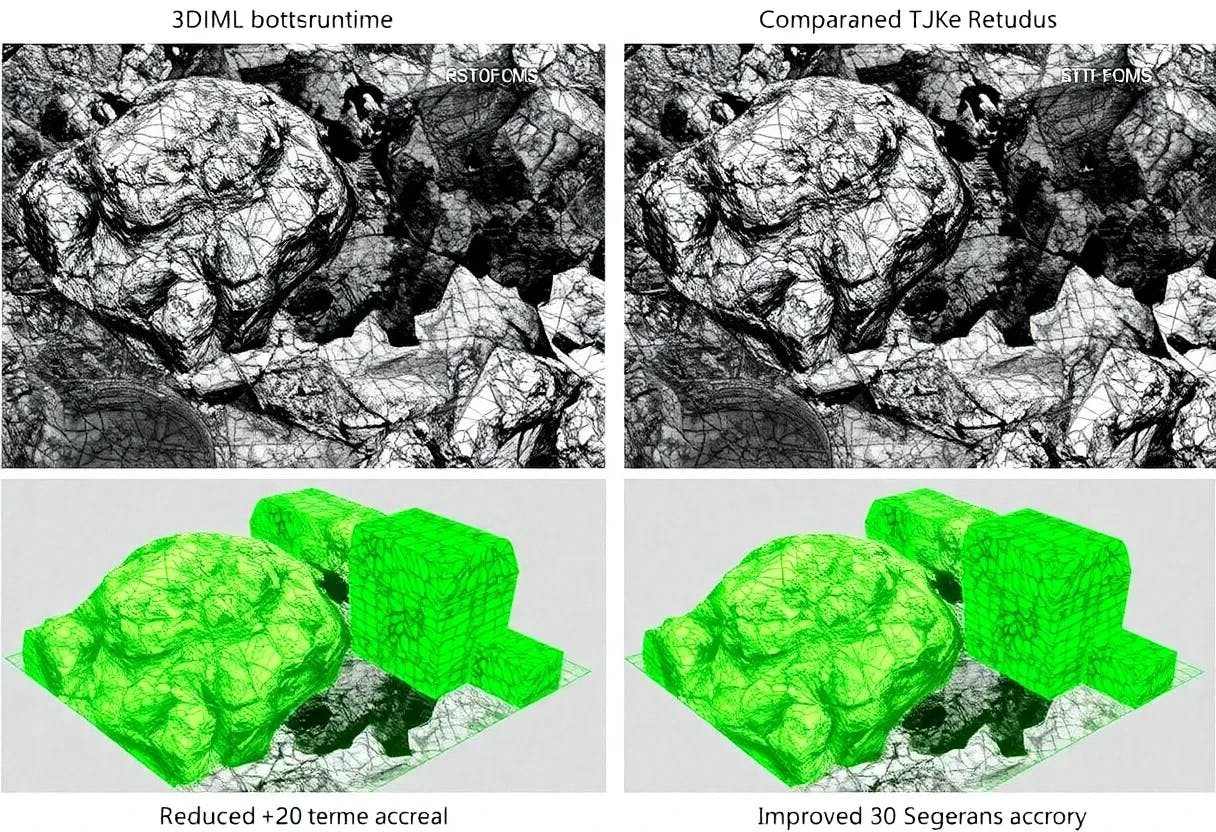Using tokenized funds to attract younger investors and simplify cross-border access
Canada maintains its position as a global mining finance powerhouse, with the Toronto Stock Exchange and TSX Venture Exchange hosting approximately 40% of the world’s publicly listed mining companies. According to TMX Group, which operates both exchanges, approximately 40% of all TSX/TSXV trading originates outside Canada, highlighting how foreign capital has traditionally fueled the sector’s growth.
Yet the junior mining sector, which has discovered approximately 70% of the world’s mineral deposits since 2000 according to industry veteran Jacques Bonneau, finds itself caught between two challenges. Traditional foreign investors face increasing regulatory hurdles accessing Canadian markets, while a new generation of potential investors remains focused on technology and cryptocurrency rather than mineral exploration.
The impact is visible in the numbers. While TMX data shows Canadian exchanges handled 1,242 mining financing transactions worth $10.4 billion in 2024, maintaining their position as global leaders by transaction count, industry observers note that capital increasingly flows to established producers rather than early-stage explorers. This comes as new regulatory barriers and market structure changes make it harder for foreign investors to participate, just when the sector most needs to attract fresh sources of capital from younger investors who have so far overlooked mining in favor of digital assets.
Three Key Barriers to Foreign Investment in Canadian Junior Mining
Tighter National Security Reviews
Canada’s Investment Canada Act, the federal law governing foreign investment reviews, has become significantly more restrictive. On November 2, 2022, the government ordered three Chinese companies (Sinomine Hong Kong, Chengze Lithium International, and Zangge Mining) to sell their stakes in Canadian lithium companies on national security grounds.
Parliament strengthened these powers in March 2024 with Bill C-34, the National Security Review of Investments Modernization Act. The new law requires mandatory pre-implementation filings for investments in sensitive sectors including critical minerals, allows for stronger interim conditions, and imposes higher penalties for violations. The result is greater scrutiny and uncertainty for strategic mining investments.
European Sustainability Regulations
Many international investors access Canadian markets through European funds subject to the Sustainable Finance Disclosure Regulation. In June 2024, Europe’s three financial supervisory authorities recommended replacing the current “Article 8/9” classification system with clearer “sustainable” and “transition” product categories, along with new sustainability indicators.
These evolving requirements raise the bar for disclosure and classification, potentially excluding many junior mining companies from funds marketed as environmentally or socially responsible investments. Early-stage mining operations can still qualify, but meeting the thresholds has become more challenging.
Domestic Market Structure Concerns
Industry groups like Save Canadian Mining have raised concerns about market structure, particularly regarding the 2012 removal of the “tick test” rule for short selling on thinly traded TSX Venture stocks. In June 2025, the Ontario Securities Commission proposed new rules to restrict short selling ahead of public offerings and private placements, responding to what it described as concerns that “short selling in connection with prospectus offerings and private placements makes pricing and completing offerings more difficult.” The proposal follows years of complaints from Bay Street about what regulators have acknowledged as potentially “abusive short selling,” particularly affecting thinly traded junior mining stocks. These market structure concerns can discourage conservative investors from participating.
Additionally, private placements, which junior miners rely on heavily for financing, face a mandatory “four months plus a day” resale restriction under Canada’s National Instrument 45-102. The exchange can impose additional holding periods. These restrictions create uncertainty for institutional investors who need clear exit strategies.
Adding to the complexity, British Columbia introduced the Mineral Claims Consultation Framework on March 26, 2025, following a 2023 court decision that staking claims can trigger a duty to consult First Nations. The new system replaces online “click-to-stake” with a requirement for applications and consultations before registration, adding time and complexity that investors must factor into their planning.
Can Tokenization Bridge Two Worlds?
A potential solution is emerging through tokenized funds that could address both challenges: easing access for traditional foreign investors while potentially attracting younger investors who have gravitated toward technology and cryptocurrency over mining stocks.
It’s important to clarify that tokenized funds are not cryptocurrency speculation. These are conventional, regulated investment funds whose shares are recorded on blockchain technology while maintaining traditional custody arrangements, transfer agents, and know-your-customer procedures. The technology simply makes distribution more efficient by enabling easier cross-border subscriptions, automated compliance, and faster transfers, all within existing securities law frameworks.
For traditional foreign investors, tokenization solves practical problems. Rather than navigating Canada’s complex regulatory landscape directly, they can invest through tokenized feeder funds domiciled in their home jurisdictions that aggregate demand and purchase Canadian mining equities through traditional exchanges.
For younger investors comfortable with digital assets, tokenized funds offer a familiar technological interface to access an sector they have largely ignored. Tokenized funds could provide a bridge, packaging traditional mining investments in a modern technological wrapper that resonates with digital-native investors.
Major financial institutions are already deploying this technology at scale. BlackRock launched its USD Institutional Digital Liquidity Fund in March 2024, which surpassed $1 billion in assets under management by March 13, 2025, with transfer agency services provided by an SEC-registered firm. UBS Asset Management introduced “uMINT,” a tokenized U.S. dollar money market fund in Singapore on November 1, 2024, distributed through a licensed partner as part of Singapore’s Project Guardian initiative on tokenized funds. Franklin Templeton enabled peer-to-peer transfers for its OnChain U.S. Government Money Fund in April 2024, demonstrating how share transfers can be automated while remaining within regulatory boundaries.
For Canadian mining, this technology offers a bridge. Rather than requiring a German ESG fund, a Singapore family office, or a U.S. institution to purchase restricted TSX Venture securities directly, a tokenized feeder fund domiciled in their home jurisdiction can aggregate demand and invest in Canadian mining equities through traditional exchanges. Canadian securities rules still apply to the underlying positions, but investors experience faster onboarding, settlement, and the ability to transfer fund shares more efficiently.
What Tokenization Can and Cannot Achieve for Junior Mining in Canada
Tokenized funds can improve market access and infrastructure. Faster settlement, lower investment minimums, and enhanced data reporting can help ESG-focused investors better assess portfolios, particularly as European sustainability rules continue evolving.
However, this technology cannot bypass Canadian law. If a foreign fund accumulates a significant stake in a Canadian critical minerals company, Investment Canada Act review requirements still apply. Similarly, if a fund purchases shares through a private placement, the four-month-plus-one-day restriction under National Instrument 45-102 still applies to those shares within the fund, regardless of whether the fund’s own units are tokenized.
The Path Forward
With national security reviews tightening, British Columbia’s consultation requirements now embedded in the claims process, European ESG rules in transition, and ongoing concerns about market structure, foreign investors need smoother access routes to invest in Canada’s mining industry.
Tokenized fund infrastructure, already being scaled by BlackRock, UBS, and Franklin Templeton, provides a potential solution to both challenges. For foreign investors, it offers cleaner access paths. For younger, tech-savvy investors, it presents mining opportunities through a familiar digital framework.
The critical question is whether Canadian policymakers and exchanges will embrace this shift. This requires not only clarity on how the Investment Canada Act treats widely held foreign funds and ensuring predictable provincial processes, but also modernizing Canada’s fragmented digital asset regulations. While Canada was among the first to regulate crypto trading and has approved crypto ETFs, it still lacks a unified federal framework for tokenized securities. Without clear rules for how tokenized fund shares are treated under securities law across provinces, the technology’s potential to bridge traditional mining finance with digital-native investors remains constrained.
Without these adaptations, the next cycle’s discovery capital may increasingly be organized in Singapore, New York, or Abu Dhabi, with Canada serving as a target market rather than the capital hub it has historically been. The technology exists not just to maintain Canada’s position, but potentially to expand its investor base to include a generation that has so far overlooked mining. What remains to be seen is whether the regulatory framework will evolve to support it.












